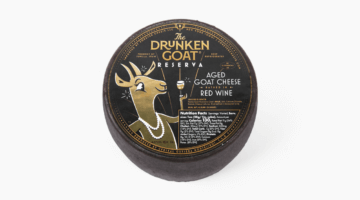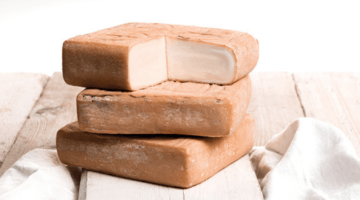The Magic of Membrillo
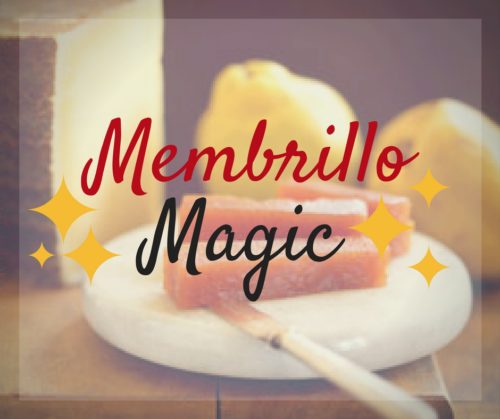
Happy September, all! It seems we have reached the yearly moment of transition – when a slight chill pervades the air and hot, sweaty, still nights are a thing of the past. In our world, we mark these transitions in the seasons through our products. At their essence, they are agricultural products that are dependent on the changes throughout the year. Fall brings our fruit products to mind, as trees grow heavy with fruit and the harvest begins. But one fruit is a bit different than most: the quince, hard and acidic and nearly inedible raw, but sweet, fragrant, and soft once cooked. Our Mitica® Membrillo goes through a pretty incredible transformation during its creation. We’re focusing on the story behind quince paste and why our version from Paiarrop is our favorite. Welcome to the mystical world of the quince and the much-heralded cheese accompaniment it becomes.
The Story of Quince
Quince, a lumpy fruit resembling a cross between an apple and a pear, originated in the fertile crescent. They’ve traveled the world since, and are now quite common in Europe and South America. A small number of trees grow in the United States; they were brought over by settlers and were popular in the early colonies. As a tree, they are fairly easy to grow; they are generally pest-free and self-pollinate. There are many varieties, but most produce green fruit, ripening to yellow, sometimes with an outer fuzz like a peach. Inside, the fruit has gritty, ivory flesh and a core with many seeds. The shape and color of quinces have inspired many artists, including Caravaggio and Van Gogh. Quinces were also found depicted in mosaics recovered in Pompeii.

Historically, quince had an excellent reputation. It was a symbol of both good luck and fertility and was favored among many aristocrats and monarchs. It was also highly valued for its medicinal properties in aiding digestion. Some people even put quince in their closets to perfume their clothes, as the raw fruit emits a gorgeous fragrance that smells of roses, honey, and citrus.
However, despite their status and outer beauty, quinces present a conundrum: when raw, they are extremely hard to eat and alarmingly astringent. Their magic lies in the kitchen, and their lovely flavor is only released upon cooking the fruit with sugar for many hours, creating soft, sweet, and fragrant membrillo or jam. The first written mention of membrillo is the 5th century, in the Roman cookbook of Apicius, who stewed quince fruit with honey. Even then, he would have seen quince’s other incredible transformation – as the fruit reduces, it turns from ivory to a deep rusty red (See “Did You Know?” below to learn more).
Making Mitica® Membrillo
Interestingly, membrillo is the Spanish word for quince fruit, but is generally used interchangeably with the fruit paste, which is formally known as dulce de membrillo. Paiarrop, a family company known for working with fruit in Valencia, Spain, has been making it for over 30 years using a recipe from their founder, Amalio. They use 100% Spanish quince, grown in Valencia and Andalucía and harvested in the fall. To preserve the integrity of the fruit, they add only sugar and lemon to their membrillo. Quince is very high in pectin, so additional ingredients are not necessary to help the mixture gel.
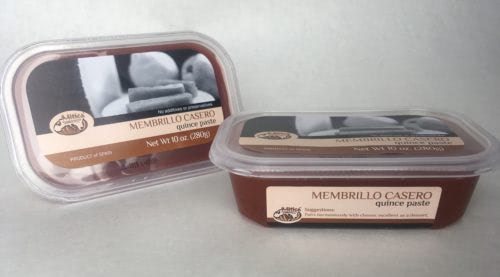
They pride themselves on using a smaller amount of sugar than their competitors, so that the unique tart fruit flavor of the quince shines and isn’t overpowered by a cloying sweetness.
Their artisans stew the unpeeled fruit, puree it after many hours of cooking, add the sugar and lemon, cook it some more to concentrate the flavor, and then let it set into a paste with some bite and a texture like pate de fruit. That’s how it has been made for hundreds of years, and there is no need to change what is already naturally perfect. Additives and preservatives only take away from this noble fruit.
Pick a Pairing
The traditional pairing that most everyone knows is membrillo and Manchego. And there’s a reason why it’s so well known – the combination of sweet and fruity with buttery and nutty is sublime. You could play around with other Spanish cheeses, like Tetilla, Andazul, Zamorano, or Idiazabal. Add in some jamón or pâté if you want a more complex combination of flavors and textures. You could melt membrillo down and make it into a glaze for meats or baked goods. Or do like Ottolenghi and throw the membrillo and cheese in a quiche and blow their minds: Membrillo and Stilton Quiche.
We carry Mitica® Membrillo in retail packaging (12/10 oz) and bulk (2/2.25kg – see below). We also have a Plum Membrillo for those looking for a twist on the original! And we plan to expand our line soon with an organic membrillo.
Bulk Membrillo – New Packaging and Size!
Our bulk membrillo is now coming in 2/2.25kg tubs (9.92 lbs). Paiarrop is using new packaging to extend shelf life and maintain quality of the product. A film over the top of the product help keeps the product air tight.
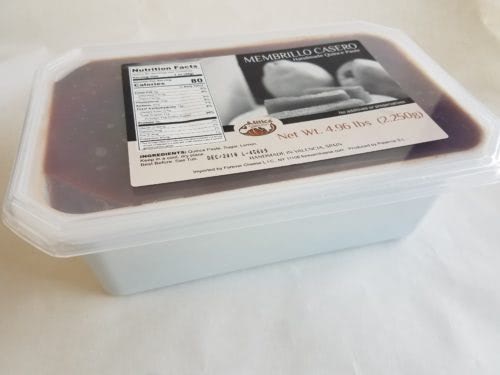
Plum Membrillo
With the addition of plum to the standard quince, sugar, and lemon, a new type of membrillo was born. This deep colored fruit paste is perfect with Valdeón, Marcona Almonds, and a flute of cava. Toast to the fall season!
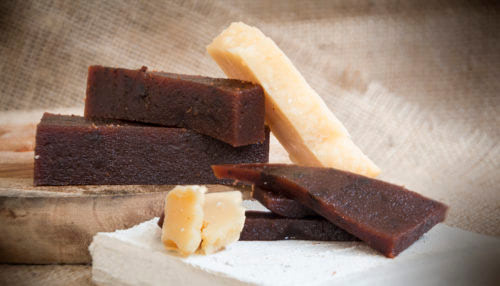
Coming soon!
We will soon be bringing in certified organic membrillo from Paiarrop, available in a 120g retail format. It’s the same beloved membrillo, made with organic fruit and sugar. It will be available in the next few months.
DID YOU KNOW? Why is membrillo deep red while quince flesh is ivory colored? Quinces are full of anthocyanins, which are commonly found in red and purple fruits and vegetables. However, in a quince, the anthocyanins are bound up in tannins, the molecules responsible for astringency in red wine. These tannins, in part, make the raw fruit so unpalatable. When tannins are heated up, however, they break down and release the anthocyanins, turning the fruit red and softening the bitterness.



